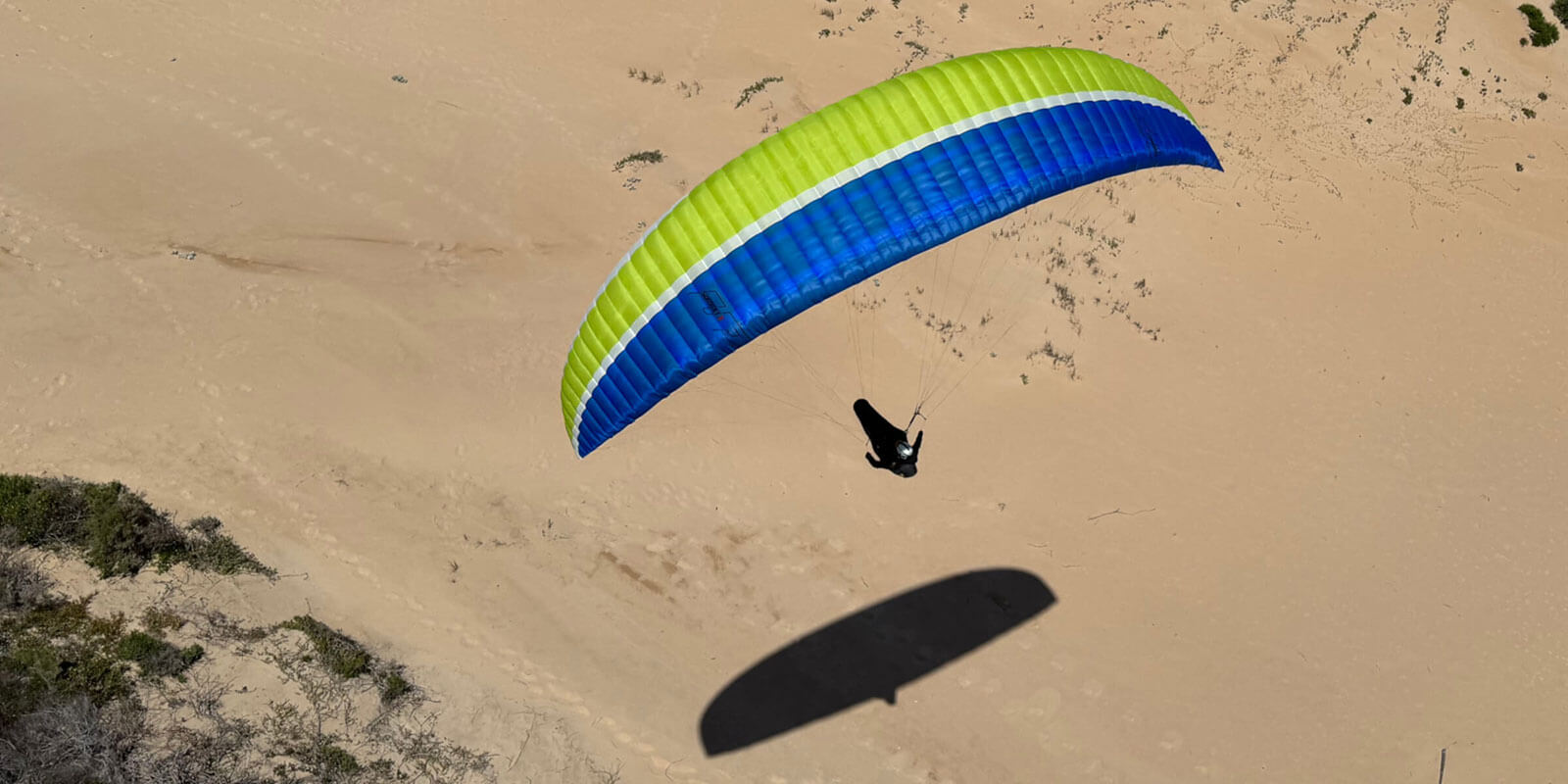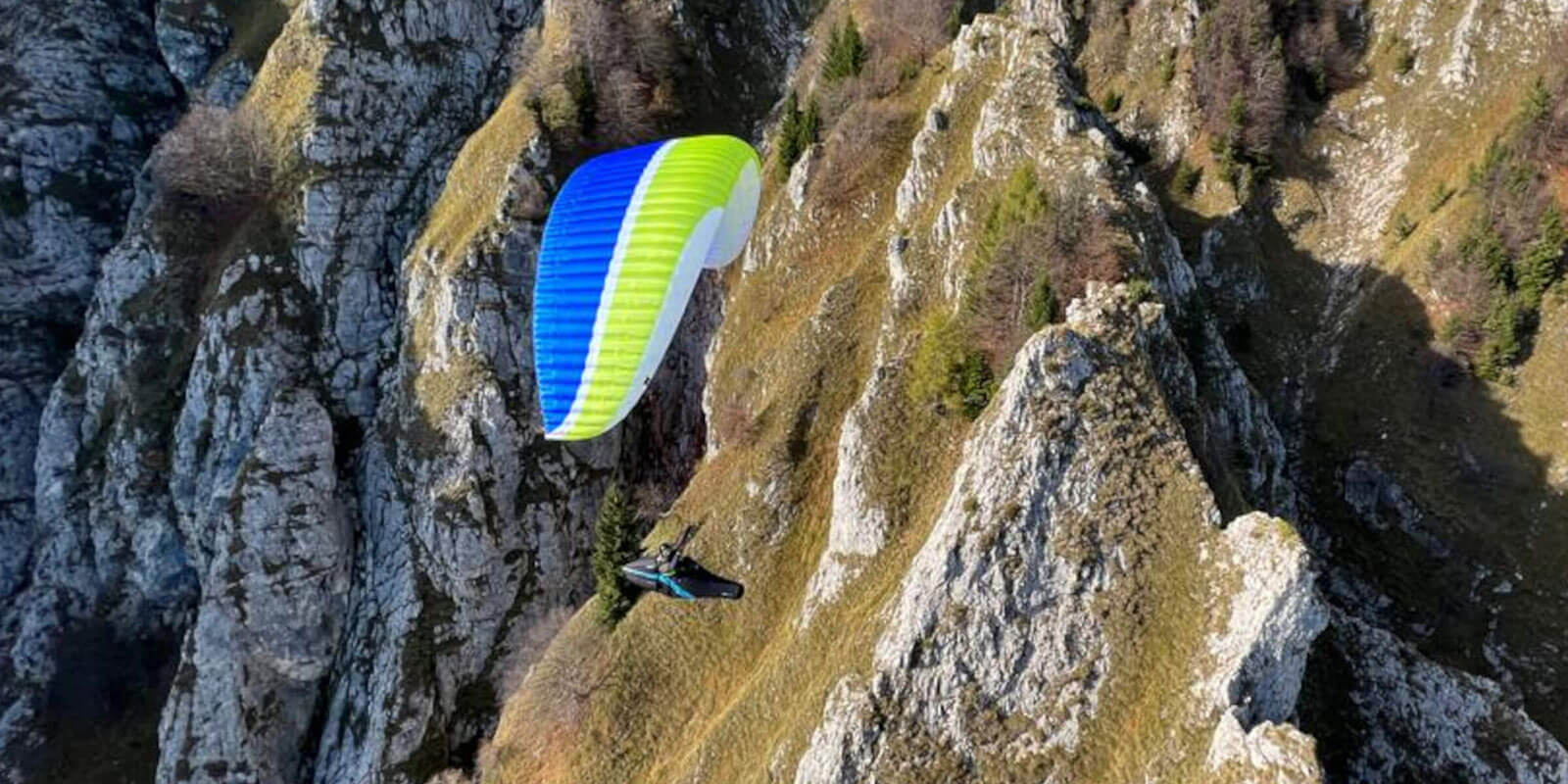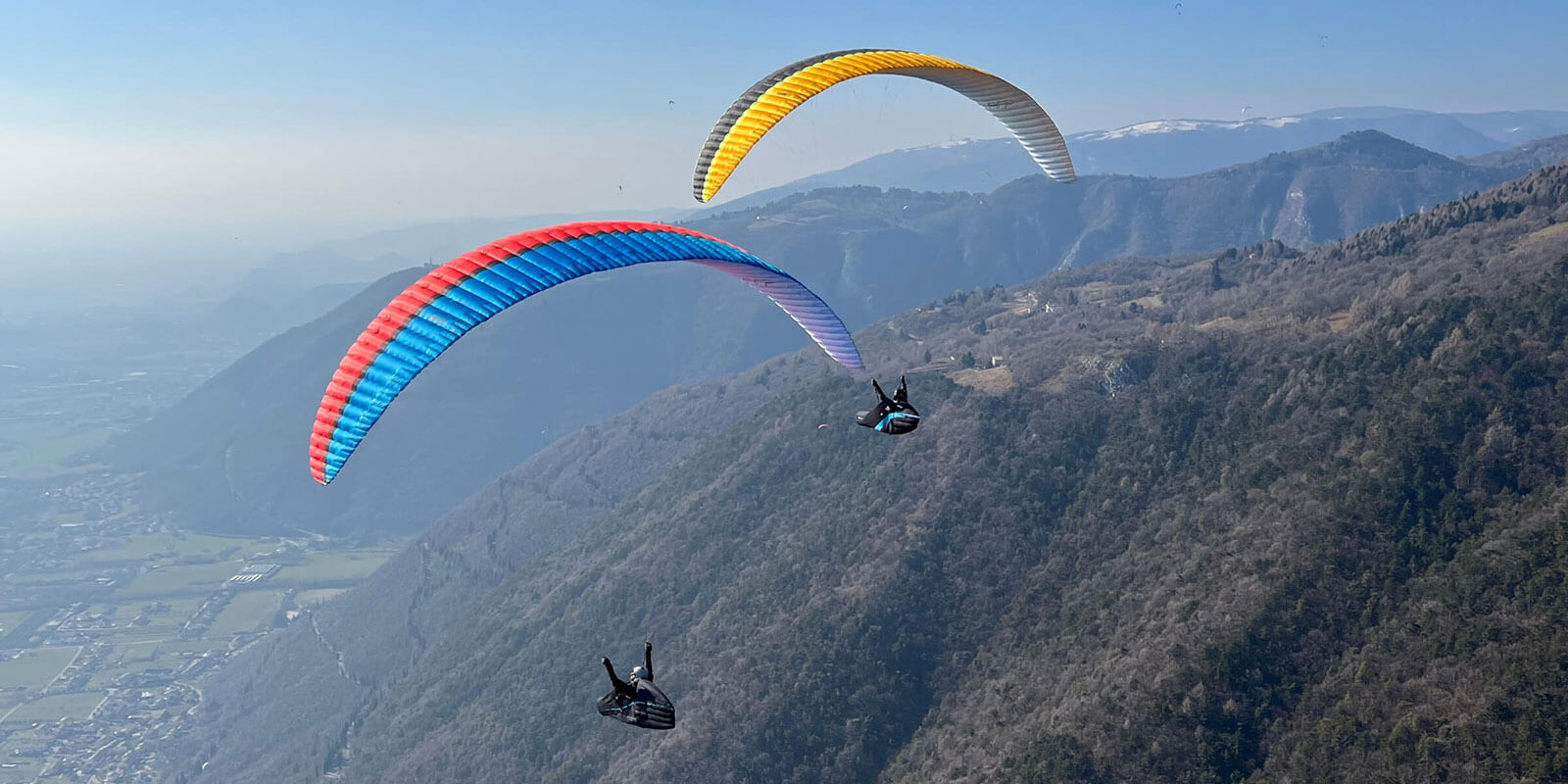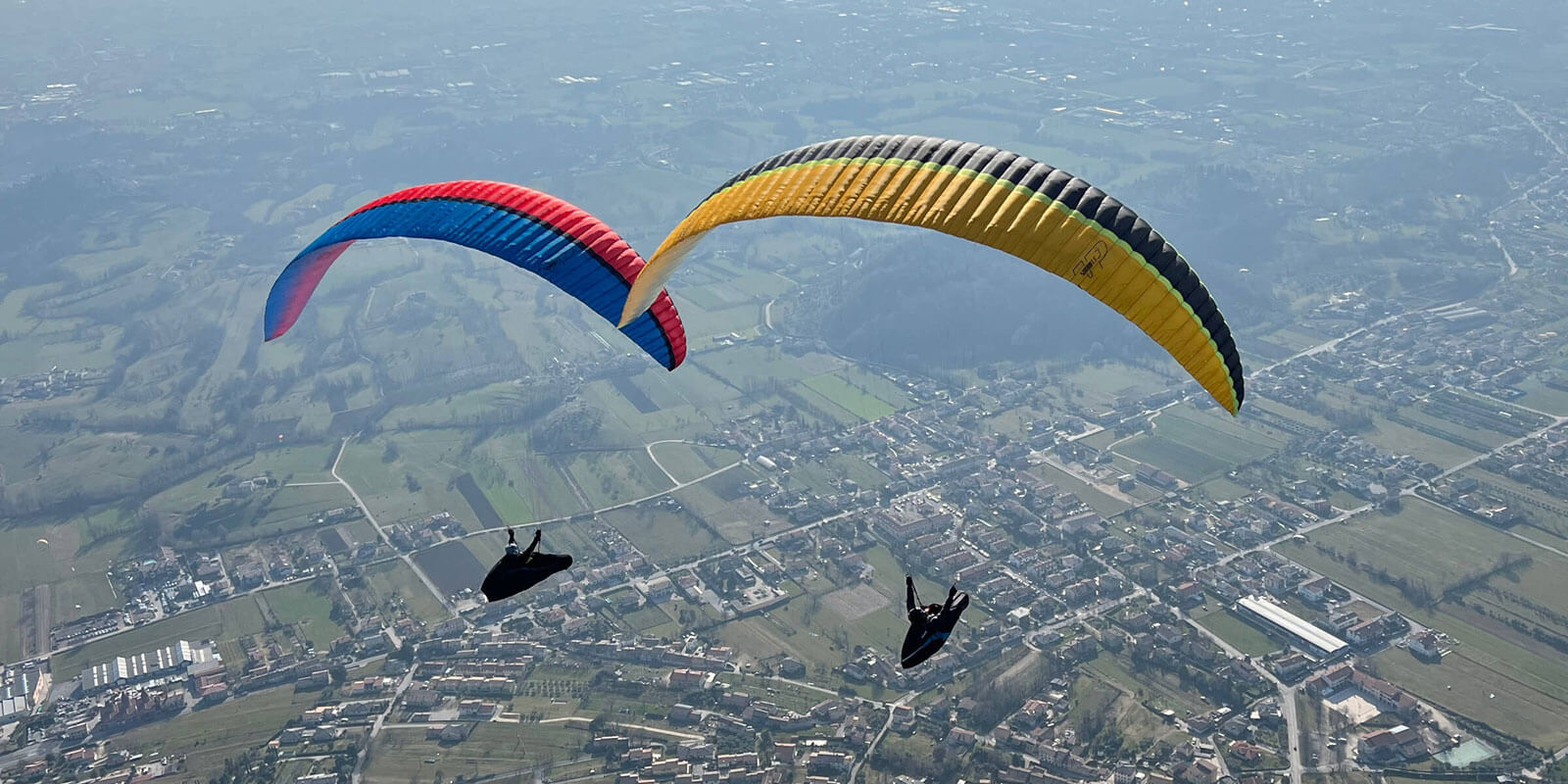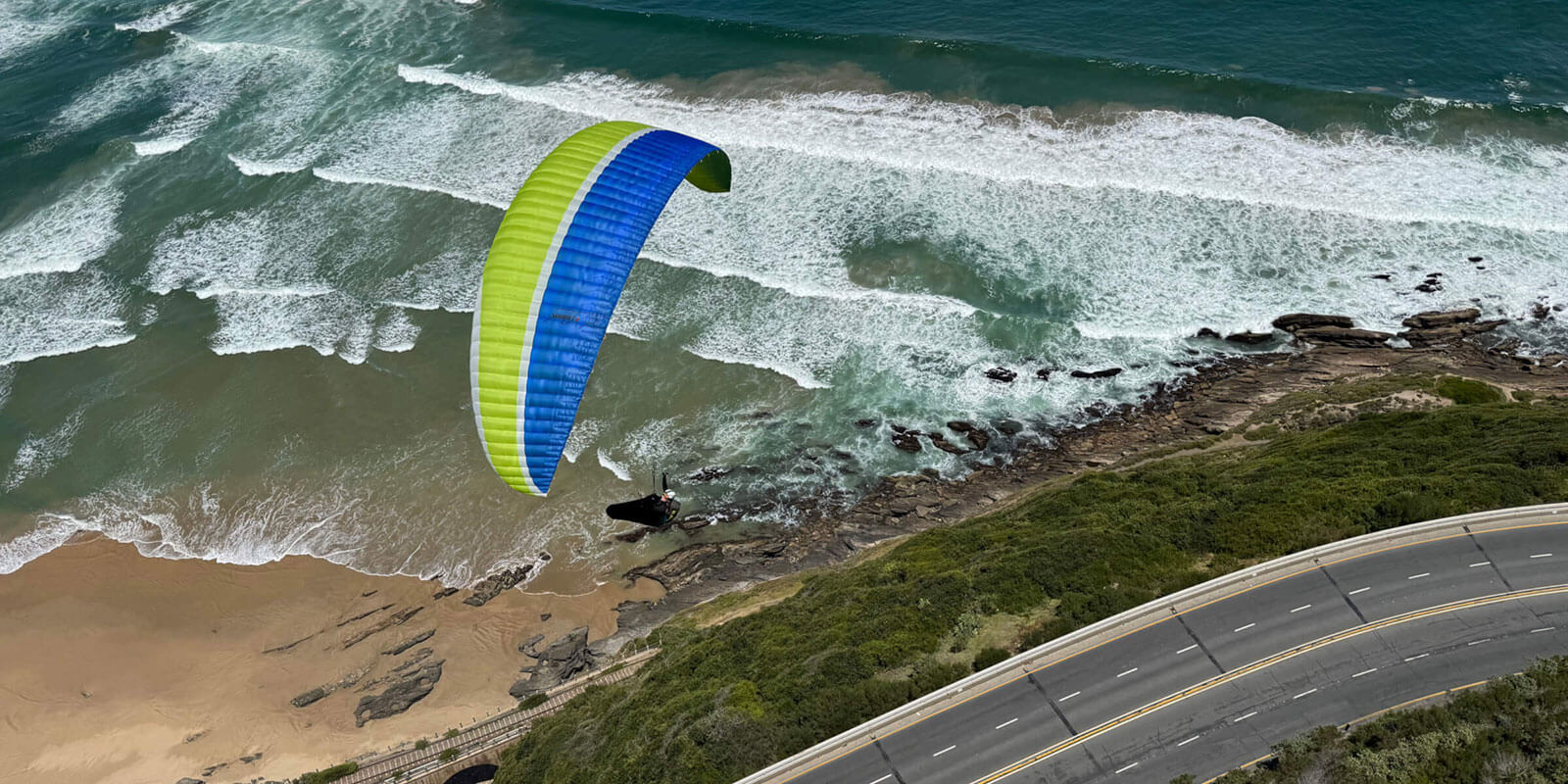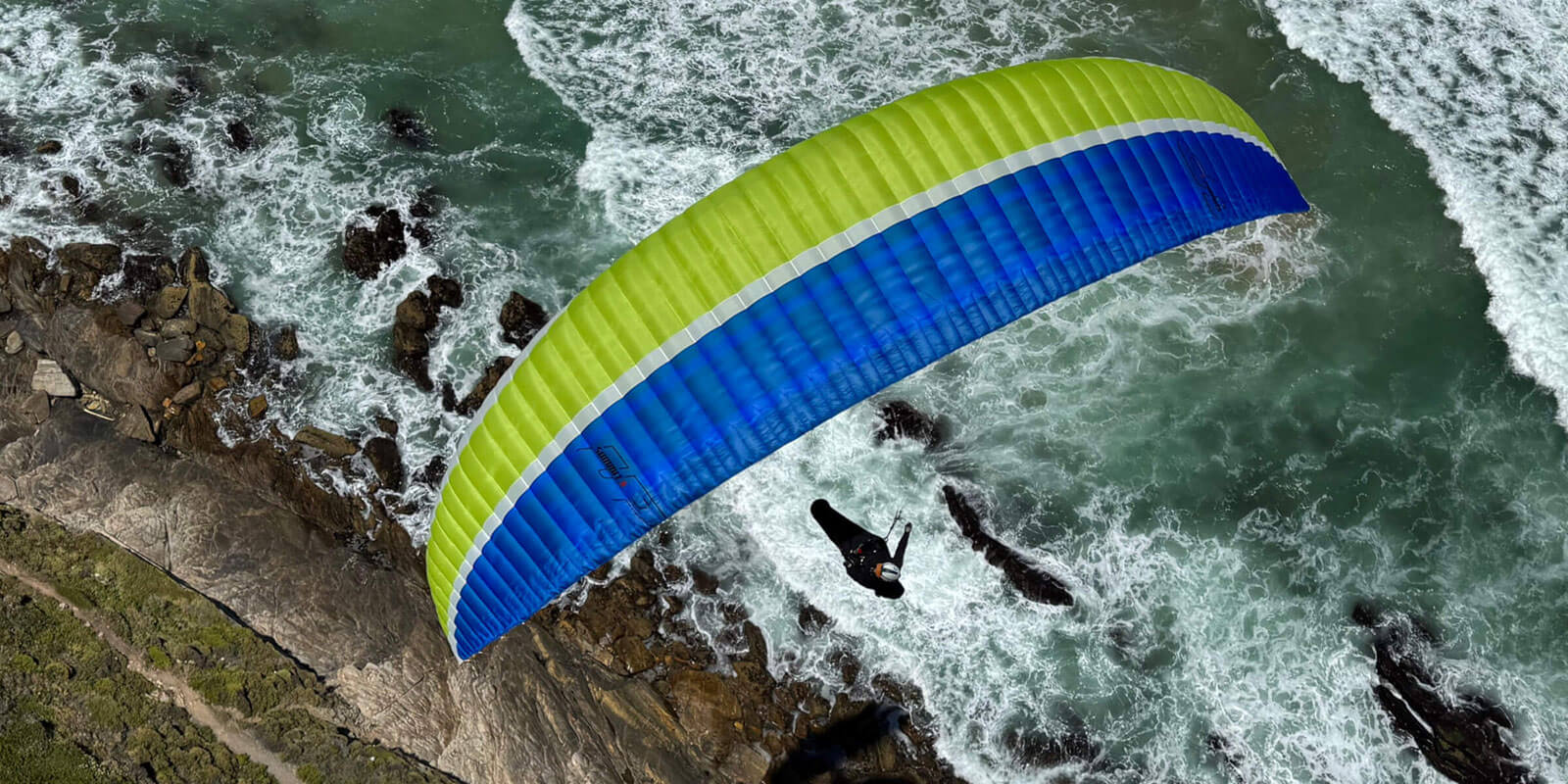When delivered, sail planes come with a comprehensive manual that, among other important things, also shows the respective polar for the model in question (polar = a curve in the coordinate system / horizontal speed is entered on the X-axis and sink rates on the Y-axis). In the paragliding world there are a significant number of pilots who demand the same for their wings – on average we receive one or two emails a week asking for polars for one model or another. Our answer is always the same: “They don't exist and they won't.” Why can't we provide all the technology-loving UP pilots with this data, for example to feed the flight instruments with it? The answer is not a simple one, so we would like to explain the problem.
Theoretical calculation of performance data
A paraglider is no longer in its original form after the first inflation. The profile chosen by the designer is sewn into the canopy with the profile ribs. However, the cell walls are only an infinitely small part of the entire wing; the largest part is the sail panels of the upper and lower sails. These inflate due to the higher internal pressure prevailing there. Due to the pressure distribution, this inflation is not precisely calculable due to the “soft” nature of the wing.
The cell walls sit in recesses in the inflated upper and lower sail panels. If you try to include this inflation in the flow simulation, you get different simulation results depending on the calculation model. With only a small change in the inflation effect that we add to the model, these vary greatly. This in turn means that all simulations are quite inaccurate and the real values change over the life cycle of the wing due to the aging of the paraglider fabric.
We therefore have the paradoxical situation that the known profile-giving parts (cell walls) are hidden territory in the sense of flow simulations and calculations. In the center of the cell, we can predict the airflow with the necessary degree of accuracy, but due to the inflation of the cell, we cannot model it sufficiently. The more cells we add to the canopy design, the more accurately the filled canopy matches the desired profile design. However, more cells result in higher manufacturing costs, higher weight and also poorer canopy behavior after a collapse. And all this before we have incorporated turbulence into the calculation.
Paragliders are “soft” flying machines made of fabric that are inflated by an infinitesimally small pressure difference. They are therefore not as susceptible to the laws of physics as flying machines made of other materials. A paraglider is constantly being “bounced around” in the air and every small movement thus changes the profile on a small and large scale. This means that the profile currently flying through the air never exactly matches the profile selected by the designer.
A significant part of the wing design is aimed at reducing or at least controlling the deformation of the profile when the wing is moving through real air (and not through a modeled laminar airflow on the screen). In UP wings, the horizontal tapes on the A and B levels in particular ensure a stable canopy along the span. Mini-ribs (small additional ribs along the trailing edge) ensure that the trailing edge does not bend when the internal pressure changes at different angles of attack. A small side note: our NGA (New Generation Airfoil), which we use on all performance wings, also smoothes out these pressure differences, which significantly reduces the phenomenon of the rear edge being shortened by the cells bulging and thus the deformation of the canopy geometry in the rear area.
In some cases, the soft, yielding property of the canopy can even be used to our advantage. Especially with lower-classified canopies, the area around the leading edge is designed to be softer in order to dampen the energy that the canopy develops when, for example, shooting forward when flying out of a thermal. This effectively prevents further descent and a possible collapse.
We are often asked why our gliders (despite their high aspect ratio) react so well to collapses and are even very collapse-resistant. The answer to this lies in precisely this characteristic: the damping effect of a soft, yielding canopy.
All this information underpins our actual intention: why we do not provide detailed performance data for our glider models. We have emphasized the technical challenge of computer-based data generation, but there is more to it than that.
Statistical determination of performance data
Another conceivable way to generate performance data with sufficient accuracy would be to collect data during countless real flights in calm air. This would be a viable approach for pilots who need data for the final glide calculator of their GPS variometer. To do this, the pilot would have to create a data table on a cloudy, early morning without wind at a sufficiently high launch site by determining the sink rate as a function of the glide rate. The more data points collected, the more accurate the resulting polar curve* will be – FOR THE GLIDER/HARNESS COMBINATION USED AND THE RESPECTIVE ALTITUDE AT WHICH THE DATA WAS COLLECTED! These data are in turn unusable for a friend who flies the same wing but uses a different harness or adjusts it differently, and they are significantly different if the data are collected at different altitudes with the same configuration. This is one of the reasons why we do not use this method to determine absolute performance data, since the determined polar is only relevant for the individual wing, and only at the altitude at which the data was generated.
Market mechanisms
Typically, the model life cycle of a wing is 2 to 4 years. If a wing manufacturer uses performance data as a sales argument, they will quickly notice that the market expects a performance improvement of about 0.5 in the glide ratio compared to the previous model. However, such an increase is completely unrealistic within a period of 2 to 4 years. Over a period of 10-15 years, this manufacturer would publish increasingly unrealistic figures, to the detriment of the credibility of the entire industry and especially for the individual manufacturer concerned. This manufacturer is only successful until the market realizes the bluff. The result then varies from mild annoyance to expensive misdirection.
Fortunately, due to the special nature of wing design, a new model can mean a giant leap forward without being revealed by a computer-modeled or experimentally measured data diagram. Simply by being both safer and easier to fly in turbulence, as well as by improving the conversion of energy into height in turbulent air and also improving climbing performance in weak thermals. These characteristics are not and cannot be measured objectively, but experienced pilots will notice the glider's improved performance shortly after take-off and will be able to use it much better than by increasing the calculated glide ratio by 0.5.
Conclusion
There are numerous good reasons for NOT publishing absolute performance data. If these are determined scientifically, e.g. with computer simulations, they are based on assumptions that cannot be completely modeled. If these are determined by flight tests, they are only relevant for the respective wing/harness combination during the test. Thus, both methods are fairly inaccurate. We want to maintain the trust of our customers, which is why we do not publish this data.
PS: There is nothing like a test flight. The most important thing is how you feel. Ultimately, you will only get the maximum performance out of a paraglider if you feel completely comfortable under the wing.


